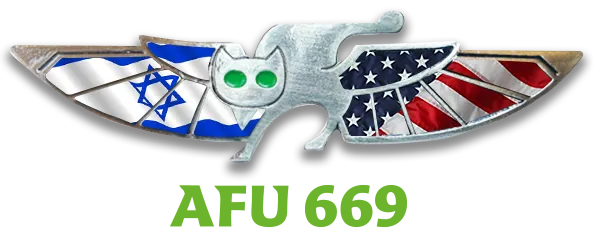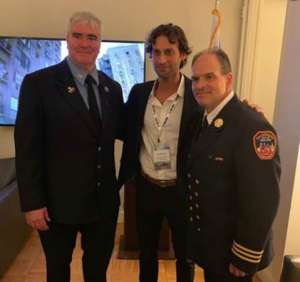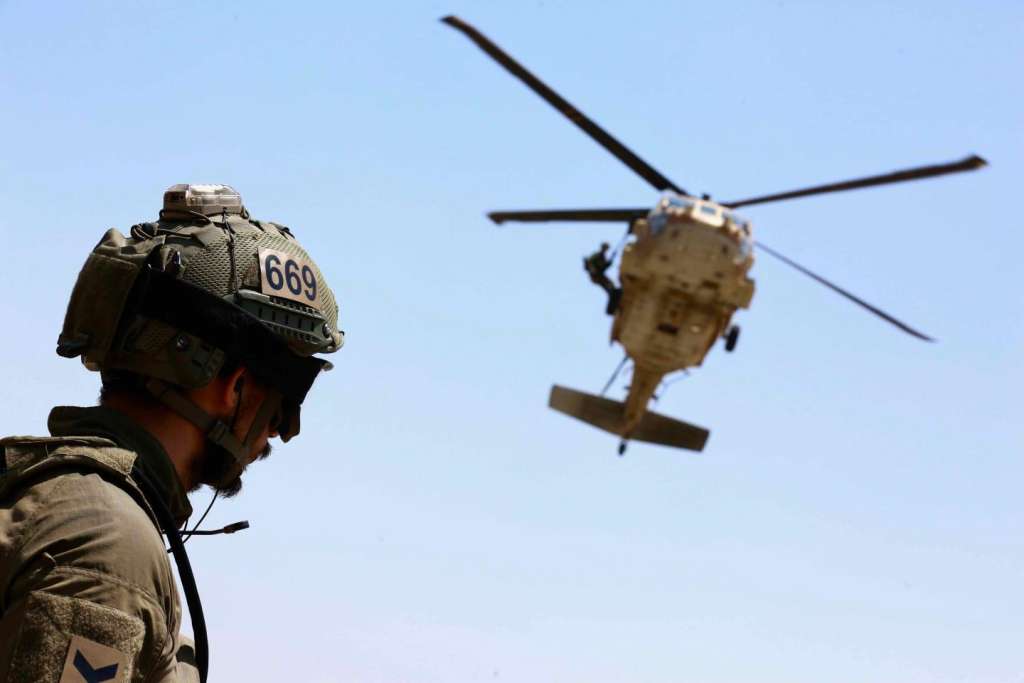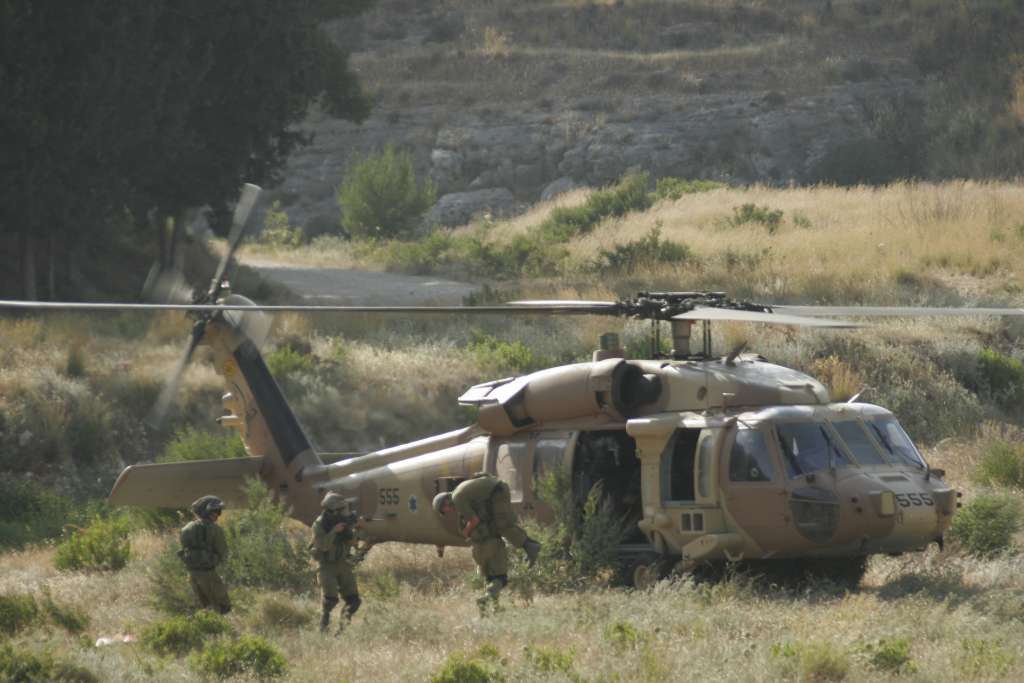ISRAELI AIR FORCE UNIT 669 VISITS NYC
Yishai Cohen • September 25, 2017
On April 1, Ambassador Dani Dayan, consul general of Israel in New York, opened his private residence to members of Unit 669, the Israel Air Force’s Airborne Combat, Search and Rescue Unit. Jewish leaders in attendance joined with members of the New York fire department, reinforcing the strong bond between Israelis and Americans in uniform who face common challenges.
Ambassador Dayan began his remarks describing the origin of the unit’s name. “The unit number 669 was chosen in dedication to the rescue operation of 669 Jewish children in Czechoslovakia under Nazi occupation who were transferred to Britain during World War II by British humanitarian Nicholas Winton as a part of the ‘Kindertransport.’ The unit consists of life-saving values and skills that enable them to continue contributing to society even after they are released from active service,” explained Dayan.
CAT Association CEO Bar Reuven (center) meets New Yorkâs Bravest. (Credit: Consulate General of Israel in New York)
Bar Reuven, founder and CEO of the CAT Association, the alumni association of Unit 669, began his presentation detailing that each year, of over 1000 IDF soldiers apply to the training program, only 50 are recruited and only 30 typically graduate. One hundred eighty soldiers are serving in the unit at any given time. The special training course, which includes varied extreme settings, lasts 18 months.
In the last 40 years, this highly specialized unit has rescued over 10,000 people and has received several commendations from IDF chiefs of staff for its operations. The unit does not just aid Israelis. They have been dispatched on many international search-and-rescue missions in disasters. Unit 669 provided assistance in Nepal after the earthquake of 2015. Ten Turkish sailors were rescued after being caught in a typhoon in 2003.
Reuven explained that the unit’s official symbol is the cat. Like a cat, the unit can operate in secrecy and with agility, but when necessary, knows how to act aggressively in a hostile environment, and always lands on its feet. These rescuers are on alert all year long and are ready to jump to any mission within a few minutes.
“The CAT Association is the alumni association of Unit 669 working to empower the unit’s graduates to continue to make significant contributions to Israeli society,” described Reuven. “Since its inception, CAT 669 has played a significant role both in Israel and abroad, through bystander first-aid awareness training, academic scholarships and combating PTSD. These soldiers were the safety net of the Jewish people, coming to the rescue of soldiers and civilians alike in the most dangerous scenarios possible, and now they need your help. They are travelling the US visiting Jewish communities and telling the heroic rescue stories and building partnerships to help continue their work.” Reuven stated that the vision of the association is “to serve as the axis linking all veterans of the unit in order to maximize the impact of the human capital embodied in them, for the better good of themselves, the unit and society in general.”
Guy Melamed served as a 669 combat paramedic. Melamed described his very first mission, where they rescued a severely injured soldier and had to administer life-saving procedures on the helicopter bringing the victim to the hospital. Melamed also described one of his last missions, in Israel’s Zafit Stream, where devastating flash floods tragically claimed the lives of 10 Israeli teenagers last spring. Melamed detailed the lengths his team went to in dangerous conditions trying to save as many children as possible. Melamed’s team saved over 20 teenagers from the rising waters.
The keynote speaker of the evening was Omri Assenheim, a correspondent of the Israeli equivalent of ‘60 Minutes.’ Assenheim’s specialty is investigating the IDF. He became the youngest recipient of the Sokolov Award, the highest award for outstanding journalism in Israel. One of his most memorable missions occurred during a rescue of soldiers across the Lebanese border. In a very smoky scene, the soldiers’ severely injured team leader, a recent Ethiopian immigrant, asked them to save his men first. The leader eventually died of his injuries. Years later, Assenheim sought out the soldier’s mother. In addition to providing comfort to the bereaved mother, they also arranged a Torah dedication in their community in his memory.
Unit 669 was founded in 1974, in the aftermath of the 1973 Yom Kippur War, when unorganized med-evac units made some 5000 extractions. The unit was initially formed to rescue pilots who abandoned their aircraft over enemy lines. In the decades since, its areas of responsibility have expanded significantly.
By Judy Berger
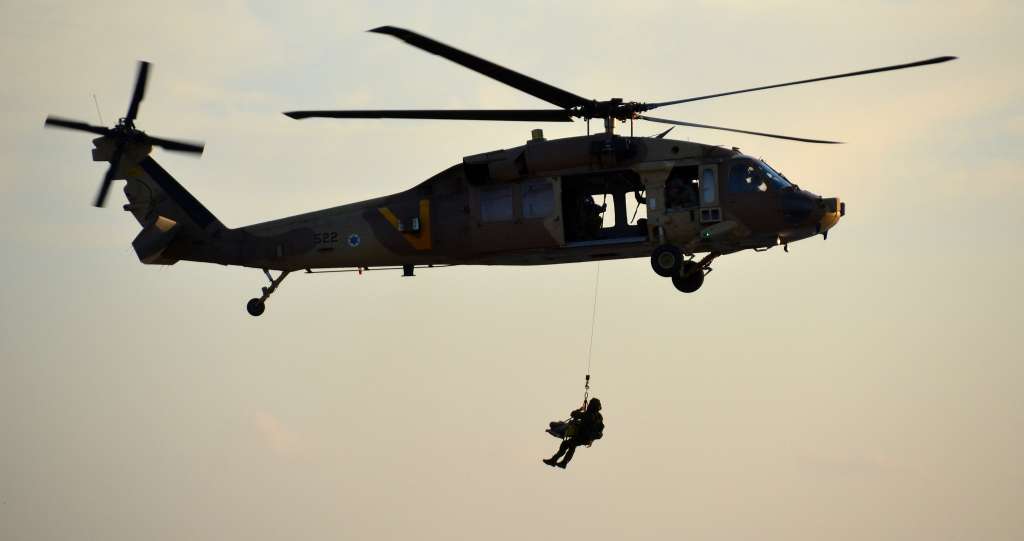
They are trained to rescue and evacuate wounded soldiers under fire, operating far beyond enemy lines, but even for these trained professionals, the Zafit Stream disaster, which claimed the lives of 10 teens, was a particularly traumatic event. Yediot Ahronot 11.24.18 In his forthcoming book, “From zero to a 100″— which will be published in the coming months by Yedioth Books—Guy, a paramedic in IAF’s special Airborne Rescue and Evacuation Unit 669, describes a day that started just like any other day, but ended with the dramatic rescue operation for missing teens who were swept away in the flooding of the Zafit Stream. Guy, 24, from Hoshaya community settlement in northern Israel, was released from the army a few months ago, after a long army service. From the beginning of his basic training course until his discharge day, Guy documented his experiences as a paramedic in one of the IDF’s most elite and intriguing units. Unit 669 participates in every possible combat scenario— from rescue and evacuation missions under fire to secret operations beyond enemy lines—and its skilled soldiers possess all the necessary fighting and rescue skills. Rescue fighters on call in Tel Nof or Palmachim air bases don’t know where their job will take them in fifteen minutes—will they be on their way to rescue hikers caught in a flood? Or wounded soldiers trapped in the heart of Gaza? For this reason, they must be prepared for every possible scenario. The following is an excerpt from Guy’s book which describes the dramatic rescue operation of high school student from the southern Zafit Stream, following the flash flood disaster which left 10 teenagers dead. The names of the unit’s combat soldiers, commanders, paramedics, and doctors were changed for information security purposes.
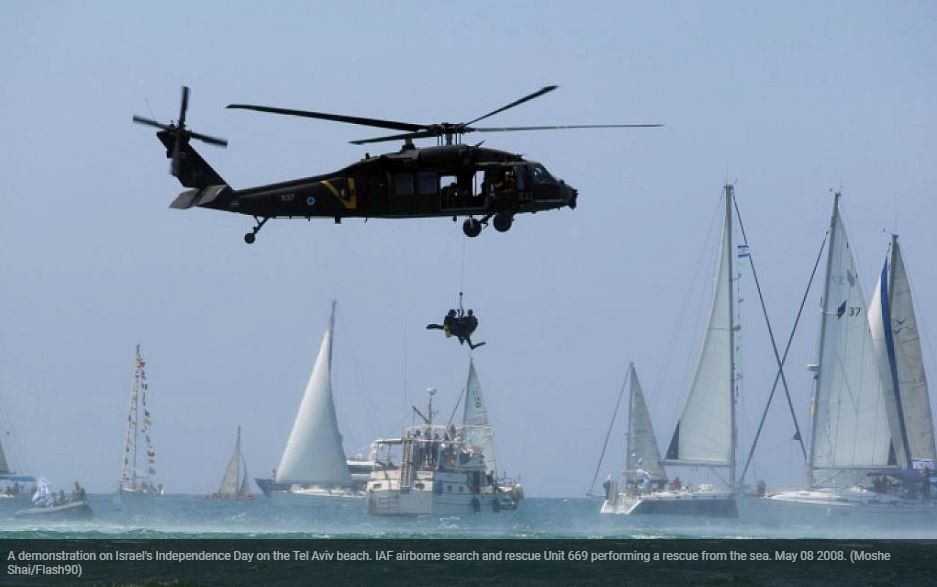
Alum of Israel’s elite Unit 669 unit heed the call to serve and train civilians around the world to take practical, immediate steps in emergency situations By EMILY BENEDEK31 January 2019 Bar Reuven was in the subway in Brooklyn when he saw someone collapse on the platform. The 29-year-old Israeli moved instantly toward the trouble. He knelt beside the young woman, made sure she could breathe, and performed a quick medical check. He shouted to a bystander to call 911, but was surprised to see most people eager to walk — or run — away. “After the medics came and took her to the hospital, I got back on the train, and people clapped for me,” Reuven said, shaking his head. “Like I was a hero. But all I did was respond. And I realized how many people are afraid to help because they don’t know what to do.” Reuven knew what to do because he happens to be a former team leader of one of Israel’s most elite forces, Unit 669, the Combat Search and Rescue Special Operations group of the Israeli Air Force, where he spent five years. Because the unit’s primary responsibility is the rescue of Israeli pilots behind enemy lines, every operator is not only a warrior, but also a combat medic. The soldiers of 669 are trained within an inch of their lives to fight their way toward the most valuable of prizes: a downed pilot and his or her plane. They may also have to fight their way out — all while administering medical care.

Dozens of top medical practitioners are expected to attend the third annual IsCREAM international medical conference focusing on dilemmas in disaster management and mass casualty evacuations following natural disasters. Organized by the 669 “Cat” alumni association, the conference on May 21 at Oshiland in Kfar Saba is expecting over 400 people to attend including medical personnel from the IDF, United Hatzalah, MDA, civilian rescue units as well as firefighters and more. The conference this year will focus on dilemmas in disaster medicine and management in both the military and civilian worlds, Prof. Ari Shamiss, the Chairman of the Scientific Committee of the association and and CEO of Assuta Medical Centers told The Jerusalem Post on Wednesday. Innovation, command decisions, reference scenarios and the cooperation between authorities during evacuation and emergency treatment will also be discussed at the conference. One panel, Shammis told The Post, of the conference will focus on the preparation, planning and response to mass casualty events such as an earthquake in Israel and how the country will react. A 2016 report by Israel’s Foreign Affairs and Defense Committee’s Home-Front Readiness Subcommittee found that if Israel were to be struck by a 7.5 magnitude earthquake, an estimated 7,000 people would be killed, another 8,600 injured and 377,000 expected to be left homeless. In addition, the country could face damages of up to NIS 200 billion. In addition to buildings being destroyed, the damage to critical infrastructures such as electricity, water and communication is expected to be great. According to Israel’s National Emergency Authority, there are 80,000 buildings, including schools and hospitals, over three stories high that were built before 1980, and not constructed to current standards. Since the complication of the report, several steps have been taken to improve the country’s readiness. But, there is still much to learn and the conference is the only conference of its kind in Israel which allows for all the rescue and evacuation bodies in the country to come together under one roof. “Israel is very involved in disaster medicine across the world,” Shamiss said, pointing to the Israeli delegation which took part in rescue operations in Brazil following the January collapse of a dam which killed close to 200 people. The disaster in Brazil will also be discussed during the conference, Shamiss said.
